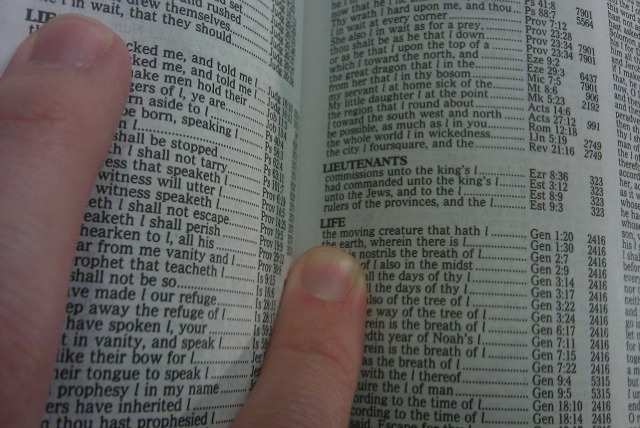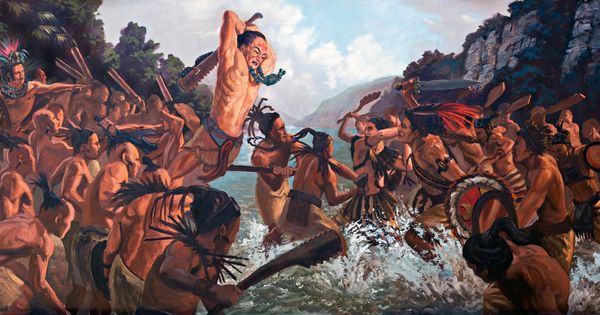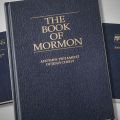Question
Gramps,
Is Strong’s exhaustive concordance of the bible accepted by the church? If it’s not, then what is? I’m trying to have a better understanding of the bible.
Bernie
Answer
Dear Bernie,
Some of the best tools I’ve found for studying the Bible can be found within the covers of our Standard Works. I first realized this for myself when I was reading Deuteronomy for my own personal study and was amazed that I had just read the same material in the Book of Mormon earlier that day. Moses lays out for the people of Israel a blessing and a curse that is before them based on their obedience to the Law (chapter 28). A more concise way of phrasing it is “Inasmuch as ye shall keep my commandments ye shall prosper in the land; but inasmuch as ye will not keep my commandments ye shall be cut off from my presence” (2 Nephi 1:20). The history of Israel and the Nephites is the fulfilling of this covenant of prosperity and destruction.
Of course, using the Pearl of Great Price alongside the Bible is a simple matter. The Book of Moses contains excerpts of the Joseph Smith Translation of Genesis, The Book of Abraham sheds further light on that section of Genesis, and Joseph Smith-Matthew is the inspired translation of the 24th chapter of that gospel.
So the first tool is to freely read the new scripture of the latter-days into the old scriptures. After all, faithful Christian bible scholars read Christianity into the Old Testament, so we should feel no guilt reading Mormonism into the Old and New Testaments.
The second tool is related to the first: take advantage of the footnotes. Much of the value the Pearl of Great Price comes from the Prophet’s inspired translation of the Bible. You can find snippets of the Joseph Smith Translation (abbreviated as JST) in the footnotes (see Exodus 7:3a and Mark 9:43a for instance). I have heard of seminary classes devoting a portion of class time at the start of the year to finding these references in the footnotes and highlighting in yellow the reference in the verse so it can easily be found when reading. They appropriately called it “searching for gold”.
The footnotes are also useful for the cross-references they provide. The New Testament authors loved quoting the Old Testament. Often times they’ll be obvious about it and a footnote will be provided with the citation (see Romans 3:10afor example). Other times they are more subtle, using the imagery of older prophets without giving them proper credit (see Ephesians 6:14c) or using a popular theme used by other prophets (see Revelation 17:2b).
The third tool is heavily referenced in the footnotes: the study helps found as an appendix in the scriptures. This includes the Topical Guide (a collection of popular scriptures referencing a given topic), the Bible Dictionary (a brief explanation of people, places, and concepts in the scriptures), the Harmony of the Gospels (in print editions, this was an entry in the Bible Dictionary), and the Chronology (giving approximate dates for biblical and non-biblical events in or near Palestine). When studying a new book in the Bible, it’s worth taking some time reading over the entry in the Bible Dictionary of the book and author, reviewing the Chronology to see where it falls with historical events (including authorship of surrounding books), and looking at the Maps to see where the events are taking place.
You may also find it useful in your studies to construct some of these on your own. Create your own topical guide of scriptures relating to different facets of the Atonement. Or start with a blank map and chart out the journeys of Paul based on the New Testament record. Create your own gospels harmony of the Saviors last hours and the resurrection. This gives you a mastery of the topics you are studying and helps you better understand which portions of these study aids are solid and which are on a looser foundation (building your own chronology will show you certain points of confusion and ambiguity).
The fourth tool moves us past the study aids printed in the Standard Works towards a library of manuals printed by the Church. The most relevant to your questions are the Institute manuals for the Old and New Testaments:
· Jesus Christ and the Everlasting Gospel
· Old Testament Student Manual: Genesis – 2 Samuel
· Old Testament Student Manual: Kings – Malachi
· New Testament Student Manual
A fifth tool, outside of official publications of the Church, can include libraries of faithful Latter-day Saint scholarship (such as the Maxwell Institute for Religious Scholarship). These can include the works of Hugh Nibley, John Welch, or a whole slew of others who approach their scholarship with the assumption that God spoke anciently and still speaks today. Other LDS scholars approach with less faith and sometimes less academic rigor leading to faulty conclusions. Such should be avoided.
Beyond this, you can find other tools like a full concordance (like Strong’s), or even non-LDS scholarship. The trick to all these is to approach with the Spirit and gauge them against the Standard Works. In biblical scholarship you can find quite a bit of useful treatments of the Old and New Testaments (for instance, you don’t need a particularly Mormon perspective to document the historical exodus). You can also find some shoddy rebrandings of history, like the popular trends to redefine Jesus. Just as I stated above, such should be avoided.
I personally find Strong’s concordance useful. It can be useful even without a knowledge of Hebrew or Greek. Learning those languages make it an even more powerful tool. Similarly, I have found these tools useful when studying the scriptures (not just the Bible), but their value has increased as I’ve become more familiar with the scriptures. I can spend less time contextualizing and more time pondering.
Gramps
nswerr







